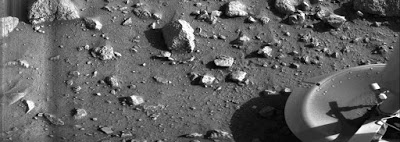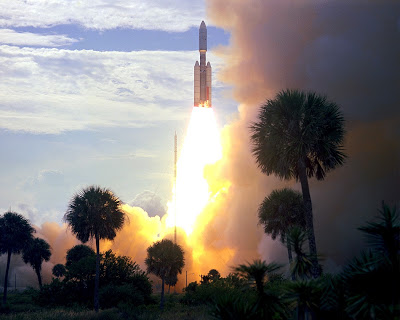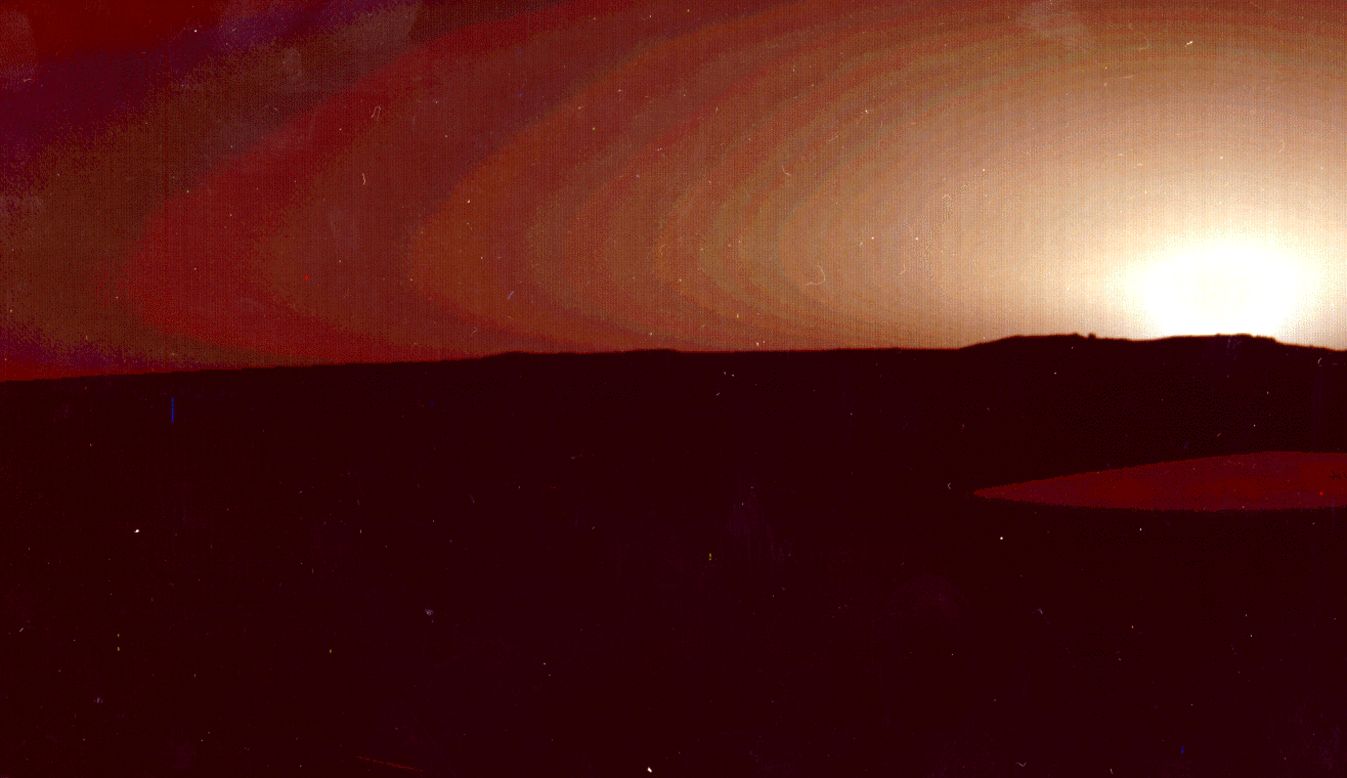“Time and time again I repeat, ‘It’s incredible.’ And it truly is. Nothing before or after can compare. It is transparent, brilliant, boundless. An explorer would understand. We have stood on the surface of Mars.” – The late Thomas A. “Tim” Mutch, leader of the Viking Lander Imaging Team, discussing his reaction upon seeing Viking 1’s first image
I can’t speak for others, but for me, the Viking program had the biggest cultural impact on how I viewed planetary spaceflight. While the Viking landers weren’t able to rove beyond their landing sites, and couldn’t take cool “selfies” upon the Martian surface, the images from school science books and the January 1977 issue of National Geographic forever made an impact on my mind: something from Earth had made it to a neighboring planet, landed successfully, and made its home there permanently. Along with the two Voyagers and ESA’s Giotto, the Vikings fired my imagination, making it seem as if the Solar System was wholly explorable.
And of course, in the last few decades, countless spacecraft have proven science fiction to be science fact.More recently, spacecraft such as ESA’s Rosetta and NASA’s New Horizons have conducted surveys of two seemingly impossible-to-reach worlds(respectively, Comet 67P and Pluto).
I don’t think I became aware until well into adulthood that the Viking program was the grandest planetary exploration mission of its time. While the two Viking spacecraft (which consisted of the landers, and orbiters) were lofted into space by Titan IIIE/Centaur launch vehicles, they were originally destined for launch vehicles more synonymous with names such as Apollo and Skylab. In addition, the debate concerning whether if the program discovered “life” on Mars still resumes to this day. I also feel other pre-Viking Mars’ missions are largely forgotten, or glossed over.
This is the firstof a series of blog poststhat will discuss lesser-known facts about the Vikings, as this month marks the 40thanniversary of Viking 1’s successful landing upon the Red Planet’s Chryse Planitia on July 20th, 1976. (On September 3rdthat year, Viking 2 landed at Utopia Planitia; according to National Geographic, it “landed tipsily, one leg up on a boulder, facing a jumble of volcanic rocks.”)
The Viking/Saturn V Connection?
Anexcellent 1978 NASA publication, The Martian Landscape, written largely by Tim Mutch, discussed Viking’s origins. Mutch stated that the Viking mission was defined by NASA in 1968, but it had a predecessor possessing a name that would become familiar to space buffs much later.
Mutch wrote, “[Viking’s] predecessor, Voyager [not to be confused with the later two spacecraft launched in 1977], never passed beyond the talking stage. Starting in 1965 and continuing through 1967, tentative plans had been developed for an integrated long-term program of Martian exploration involving, first, flyby and orbiter missions, and then a series of lander missions in 1973, 1975, and 1977.”
Then Mutch drops one of the most superbadass sentences in spaceflight history: “Each of these Voyager missions was to be launched by a giant Saturn V rocket. Successive missions were to contain increasingly sophisticated scientific equipment, culminating in a 90- to 450-kg biological laboratory in the 1977 Voyager spacecraft.” Can you imagine ambitious Mars missions lofted by the mighty Saturn V? That would be almost too cool to endure.
As it turns out, it was WAY too cool to endure. Mutch explained that these missions were bandied about during the “heyday of Apollo when unlimited budgets were projected far into the future.” During this time, NASA also proposed human-helmed missions to Venus, among other lofty ideas. The Voyager Marsprogram, as stated earlier, never made it past talks, having been scuttled by late 1960s budget cuts.
Another idea to plant a “hard lander” upon Mars’ surface was discussed, but “[i]t was recognized that the mission lacked both scientific merit and exploratory excitement,” Mutch stated bluntly.Some of Voyager Mars’ objectives continued with Viking, which, too, felt the sting of budget cuts. One of its biology instruments, Dr. Wolf Vishniac’s “Wolf Trap,” fell victim to such cuts in 1972. Vishniac had been working on versions of this instrument since 1959 for possible future planetary missions.
Funding also affected its launch date. Slated for launch originally in 1973, the first Viking didn’t leave the planet until August 20, 1975 (launch opportunities to Mars are most favorable every 26 Earth months). While it didn’t leave on a Saturn V (the last Saturn V launch lofted Skylab, America’s first space station, into orbit in May 1973), the Titan IIIE/Centaur was still a pretty magnificent-lookinglaunch vehicle.
But what happened with the name Voyager? Another program under development during the 1970s, featuring twin spacecraft, possessed the unwieldy sobriquet of Mariner Jupiter/Saturn 1977 (MJS ‘77 for short). What was the program renamed? Voyager. And, as they say, the rest is history…
Sources/Recommended Reading:
1. Gallentine, J. (2015). Infinity Beckoned: Adventuring Through the Inner Solar System, 1969-1989.Lincoln, NE: University of Nebraska Press.
2. Mutch, T. (1978). The Martian Landscape. Washington, D.C.: NASA Scientific and Technical Information Office.
Emily Carney is a writer, space enthusiast, and creator of the This Space Available space blog, published since 2010. In January 2019, Emily’s This Space Available blog was incorporated into the National Space Society’s blog. The content of Emily’s blog can be accessed via the This Space Available blog category.
Note: The views expressed in This Space Available are those of the author and should not be considered as representing the positions or views of the National Space Society.





















